#Lophiiformes
Explore tagged Tumblr posts
Text
goosefishcloseup.gif

85 notes
·
View notes
Text

Sea Toad aka Coffinfish (Chaunax suttkusi), family Chaunacidae, order Lophiiformes, photographed in the deep sea (~740 m | 2,428 ft) in the Gulf of Mexico.
There are several species of coffinfish, many do not have distinct common names.
photograph via: NOAA Ocean Exploration
#coffinfish#sea toad#fish#ocean#north america#ichthyology#chaunax#chaunacidae#lophiiformes#nature#animals
368 notes
·
View notes
Text




endless ocean is the best game in the world what do you mean i can befriend my favorite fish ever and have her follow me around while scuba diving and reading about marine biology 🥹
23 notes
·
View notes
Text
Taxonomy Tournament: Fish


Lophiiformes. This order is made up of Anglerfish, which lure in smaller fish prey using their luminescent fin ray. In some species, males are serveral orders of magnitude smaller than the females, which fuse with their mates, reciving nutrients through blood in exchange for sperm.
Tetraodontiformes. This order contains many fishses with unusual body structures, such as boxfishes, which are boxy as the implies, pufferfishes, which are round and able to inflate, and the ocean sunfish, the largest bony fish.
#animals#biology#polls#poll tournament#zoology#anglerfish#fish#boxfish#pufferfish#Lophiiformes#Tetraodontiformes#0xcv0xf3#Animal Tournament#Animal Tournament Round 1
136 notes
·
View notes
Text
Remember to reblog and join our Discord for a more thorough conversation with other Creampuffs!
Let me know if I missed someone or send an ask if you have an idea for a poll you'd like to see :D
#carmilla series#carmilla movie#carmilla#carmilla karnstein#the dean#lophiiformes#corvae corp#Vordenburg#theo#danny#mattie#elle#poll
6 notes
·
View notes
Text
Things that won’t happen but would be really fun and neat if they did:
Me rewatching of all of Carmilla The series in order to write Dead Boy Detectives crossover fanfiction in which the Dead Boys et al encounter Carmilla et al while trying to defeat a giant scary anglerfish
11 notes
·
View notes
Text

Clown Frogfish
#clown frogfish#warty frogfish#frogfish#Antennarius maculatus#Actinopterygii#Lophiiformes#Antennariidae#Antennarius#upl
6 notes
·
View notes
Text
Ocean Animal of the Week.
As the eternal god of the ocean, it is only fair that I educate the masses about my wonderful ecosystem.
This week's ocean animal is the majestic frogfish! I am especially proud of this creation.

Look how beautiful they are.
Frogfish are born of the order of Lophiiformes and the family of Antennariidae.
Frogfish and Anglerfish are quite similar in their methods of hunting. using lures to trick prey into coming near them. Frogfish use camouflage to blend into their unique environments, thus making prey and predators unable to spot them. Some may change color or be covered in peculiar colors and textures to blend in even more with their habitats.
Despite being such expert ambush predators, they are not good with many other methods of hunting. They are known to move slowly, which is why they rely on ambushing their prey. They may move slowly, but when they strike prey, they move extremely fast!
Do not dare to underestimate these creatures! Their slow movements and... Peculiar appearances serve them quite well in the wild!
Other facts:
-They feast upon crustaceans, fish and sometimes resort to cannibalism.
-They do not swim much, despite being called Frogfish; They have no swim bladder, and usually use their limb-like fins to crawl along the sea floor.
-They can be found in many areas! They are reportedly located within the Atlantic and Pacific ocean, the Red Sea and the Indian ocean. Some may even be found in brackish waters, along with fresh waters near river mouths.
-They can strike their prey in just six milliseconds. They may be slow movers, but are extremely fast at ambush attacks. Such amazing creatures!
-Not all frogfish mimic abiotic factors of their environment. Some mimic sponges, sea squirts, or even urchins.
-They can be covered with algae and hydrozoa!
-Their lure is called "Esca". The same goes for Anglerfish lures!
These creatures may look strange to human eyes, but they are perfectly suited for their environment. They were built to survive, not look "pretty".
Although, I believe they are adorable.

5 notes
·
View notes
Text
frogfishdke → lophiiform
#from lophiiformes - name of the order containing all anglerfishes#having identity thoughts - wondering how useful the 'dyke' label is to myself -#and anyways a change is nice every so often :-)
3 notes
·
View notes
Text
(TW: Fish gore and internals)



Colorless, human design and some info under the cut.



So, the mer AU.
Some species of mermaids are known to haunt humans when they are hungry, other species don't. Sirens are known to sing (or scream at the sky, if you want to call it that) when a storm is coming.
Sun is inspired by flying fish, and the tongue by a sea butterfly's mouth. (because of the "wing" fins I would consider him a siren, but a lot of mythological creatures are called sirens so idk). He's clingy and an attention hoarder.
Moon is inspired by abyssal fish, lophiiformes (specifically those with antennas) and black dragon fish. He's pretty chill as long as is well fed. He purposely creeps out others with his antennas, and hates Sun's tongue thing.
And Eclipse is inspired by axolotls and leafy sea dragons. They're pretty pacific but won't hesitate in defending themselves when they can't find a way out. Their tail is strong, they can send you flying across the room.
Here is the human design (my selfinsert, Fern) + outfits and a size chart of them long boys.


In this AU Fern is a student at a marine biology university. They conserve and rescue marine life. Some of the rescued especies being the celestial trio, which were assigned under Ferns care with help from another student.
Some images of the three together in one picture that were supposed to be the header of the post but didn't decide which to chose so I'm putting here my 5 favourites. They don't quite fit well 'cuz I drew them separately.





#lyna arts#my art#drawing#sketch#digital art#dca au#Sea Born Shenanigans AU#mermaid au#fnaf daycare attendant#fnaf sun#fnaf moon#fnaf eclipse#oc#selfinsert#tw fish gore
2K notes
·
View notes
Text

Between 100-130 million years ago on Atterra, lophiiformes (anglerfish) split off from other teleost fish and began diversifying much like their Earth counterparts. During this period, a group of early anglerfish began to crawl along the ocean floor, just like the extant frogfish of Earth. This lineage of anglers found their way into the hollows through flooded or underwater tunnels. Slowly transitioning from salt water to brackish waters before finally becoming freshwater fish as they adapted to their new environment. These underground anglers began to use their diminishing swim bladder as a basic lung as they clumsily walked across the cavern’s floor in search of new hunting grounds and/or water sources to breed. Each new generation of these amphibious anglers became increasingly efficient at terrestrial locomotion. As time passed, the rays of the amphibious angler’s fins fused to resemble tetrapod limbs. This adaptation allowed them greater survivability from predation by anthropods (arthropods that diverged early in their evolution, developing an internal skeleton, lungs, and a closed circulatory system). Enabling them to diversify into different niches.
As their limbs became more specialized for movement on land, the terrestrial anglerfish split into three distinct lineages found in the second and third layers of the hollows. The more basal ambush predators who continued to live a more amphibious and sedentary life stayed close to water, utilizing camouflage and their lures to hunt prey in competition with small amphibians inhabiting the hollows. Most species specialized in running down prey lost their lure entirely, filling small to medium grazers and predators niches. Those specializing in climbing and arboreal life developed long, prehensile tails to help them navigate their environment. A handful of these species have colonized Atterra’s surface to varying degrees. Due to terrestrial anglerfish having four legs instead of three like the terrestrial mudskippers, terrestrial anglers can reach larger sizes on average than terrestrial mudskippers. With the average height of many terrestrial anglerfish species being waist to chest height of most humans.
Anatomy/ Physiology:
Terrestrial anglerfish have four-chambered hearts like birds, mammals, and other terrestrial teleost fish. The hyoid bone and inner ear bones are formed from the gill arches of the terrestrial anglerfish; the gill arches ossifying and attaching to the back of the lower jaw to form the ear bones of the animal. Like terrestrial mudskippers, the terrestrial anglerfish has four nostrils, the two on the end of their snout, and the two under their back legs evolved from their gill openings, which were used in the same way as frogfish as a means of jet propulsion by gulping in water through the mouth and pushing it out through their gill openings.
Like in other terrestrial teleost fish, the gill covers form into an outer ear to help it detect sounds. Since anglerfish devour prey through suction feeding, terrestrial anglerfish adapted their jaws to hunt prey on land efficiently. An extra jawbone attached from the back of the bottom jaw and the temple (as seen in some anglerfish, such as monkfish) enables terrestrial anglerfish to extend their jaws forward in the same way sharks can. Once extended, the top jaw swings downwards to shut the jaw to grab its prey. The jaws are then retracted as the extra jawbone is pulled back into its resting position. To aid in prey capture, some terrestrial anglerfish also possess an extendable tongue like a frog or chameleon to secure prey and pull it into the animal's jaws.
Specializations:
Species that have lost their lure use their two remaining dorsal spines for display and as a signifier of their health to fellow competitors and possible mates. The aboral species of terrestrial anglers use their long prehensile tails to grip tree branches and fungal towers as a fifth limb. Some species even use their tails, like boa constrictors, to constrict their prey.
#fantasy#creature#creature art#creature design#monster design#monsters#speculative biology#speculative evolution#art#artwork#digital art#my art#illustration#drawing#digital illustration#sketch#skeleton art
21 notes
·
View notes
Text

Sea Toad aka Coffinfish (Chaunacops coloratus), family Chaunacidae, order Lophiiformes, found in the deep sea, off the coast of California, USA
Smaller immature fish are bluish, and the older fish are red.
photograph by MBARI | NOAA
video: Fishing in the deep: observations of a deep-sea anglerfish (youtube.com)
#coffinfish#anglerfish#sea toad#chaunacops#chaunacidae#lophiiformes#bony fish#fish#ichthyology#ocean#animals#nature#north america
329 notes
·
View notes
Text
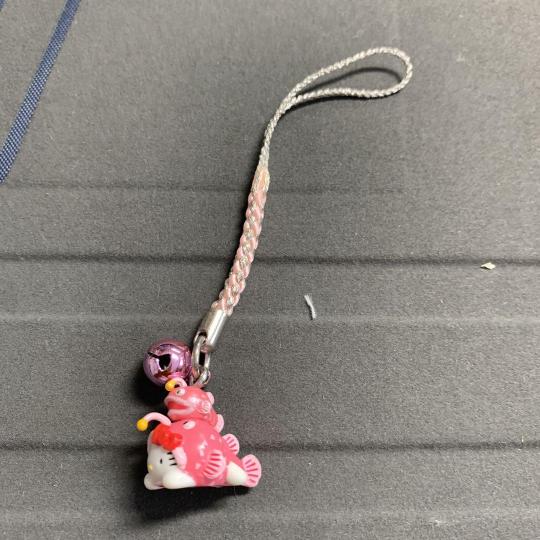
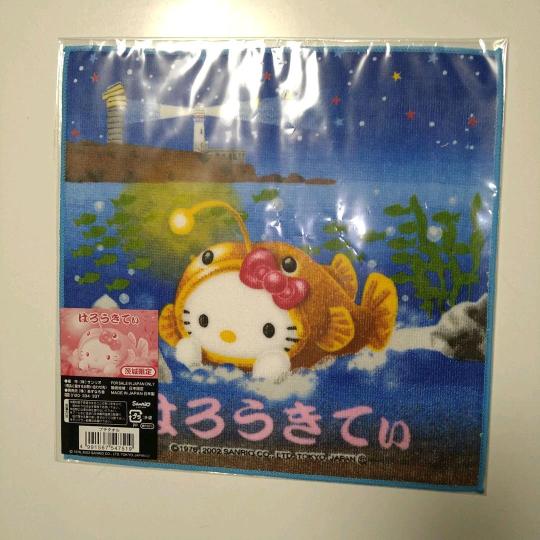



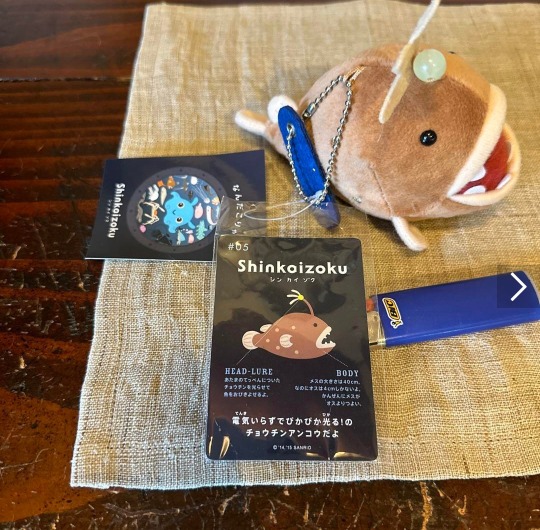

beautiful anglerfish finds from secondhand japanese websites
#lophiiformes#fish#fav#sea#i bought the sanrio (shinkaizoku) one!! i have been hunting her for years#and finally found one at the price of 600¥#🎀
24 notes
·
View notes
Text

Astral anglerfish was too cool of a concept to pass up on. I really like anglerfish I think they’re neat and spooky.
Don’t think I’ll get as detailed as you @moonstruckdraws like you did with your space animals but here goes.
This is creature is called Lophiiformes Pōwehi and unlike their earthly counterparts, these beings are enormous. Mainly the females while the males are tiny in comparison just like actual anglerfish. Their bodies are also aligned with constellations and stars.
The bob bait that they have is actually a dwarf star to lure in other prey with its bright luminous glow, and a black hole on the inside of their mouth so that any prey that gets too close gets pulled towards the fish and has no chance of escaping.

So it would be highly suggested to avoid coming into contact with these beasts lest you want to see the light of day :D
#astral creatures#my art#bunsona#moonsona#thank you procreate for letting me have fun with space brushes and tools#it is so satisfying to create outer space#moon saga
53 notes
·
View notes
Note
Tengo una pregunta ¿como funcionaria el sexo entre una sirena y un humano o entre un sireno/triton y un humano? ¿Donde estaria el area genital?
Hay muchísimos chistes al respecto (como las sirenas invertidas) pero si nos guiamos por la biología...
La gran mayoría de los peces óseos tienen fecundación externa, o sea, no existe la penetración. La hembra deposita los huevos, o más bien los expulsa, y el macho los fertiliza con esperma de la misma manera bajo el agua.

SEXOOOOOOOOOOOOO
No significa, igual, que no exista cortejo. Esto es muy diverso porque los peces óseos son muy diversos, pero, por ejemplo, el macho suele estimular a que la hembra expulse los huevos, puede haber construcción de nidos, rituales de apareamiento, etc. Pero lo que no suele haber en los peces óseos (hay excepciones) son órganos externos visibles. Existe básicamente un orificio urogenital casi indistinguible cerca del ano. Casi siempre se encuentran en el área ventral.
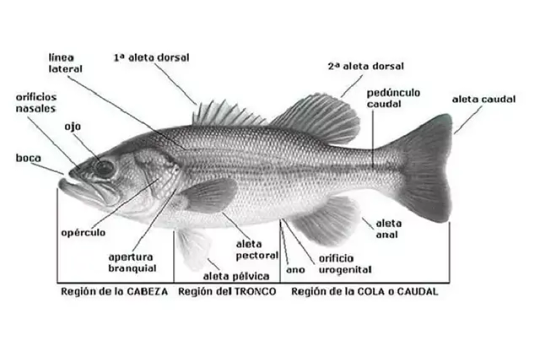
En general, las sirenas como se las suelen mostrar en la cultura popular solamente tienen la aleta caudal (la cola) sin la aleta anal que, bueno, correspondería que exista en esa parte, modificada o no.
(Las aletas varían según la especie. Nuestras piernas vienen de las aletas pélvicas, que son diferentes en los peces óseos sarcopterigios, es como si tuvieran 4 aletas en donde estarían las petas, podés verlo en un celacanto)
En los pocos casos con fecundación interna existen aletas (la aleta anal, que sí, se llama así) modificadas en lo que se llaman "gonopodios" o "andropodios" en forma de tubo que guían el esperma, esto se ve en los poecílidos por ejemplo, y a veces esas aletas pueden ser prominentes:

En cuanto a los peces cartilaginosos (tiburones & amigos), todos, al menos que me olvide una excepción, tienen fertilización interna. Los machos suelen tener también aletas modificadas llamadas claspers, que están bastante especializados, que ingresan en la cloaca de la hembra durante el aparamiento como un pene. Otra diferencia en general es que los condrictios (peces cartilaginosos) tienen menos crías, depositan pocos huevos a la vez o los crían internamente (es más, a veces los pichones de tiburón se comen entre ellos dentro de la madre), al contrario de los peces óseos que pueden depositar cientos, miles e incluso cientos de miles de huevos (el pez luna deposita más de 300 millones de huevos, alguno va a sobrevivir). Los huevos de los tiburones, rayas, quimeras, son bastante interesantes, en inglés le dicen "mermaid's purse", cartera de sirena, porque parecen una especie de estuche.
Bueno esto es en general reproducción en los peces. Después tenés el caso del caballito de mar donde los huevos fertilizados quedan en el vientre del macho, entonces queda embarazado. Están los peces pescadores, peces diablo, peces sapo (Lophiiformes) donde el macho es básicamente un pequeño parásito de la hembra que queda aferrado a ella durante toda su vida. Los peces payaso (de Buscando a Nemo) pueden cambiar de sexo según las condiciones ambientales, y no son para nada los únicos, es algo muy común entre los peces. Y mucho más.
Dejo esta información a tu criterio.
26 notes
·
View notes
Text

—————————-——————————————
Common name: Anglerfish (I'm mainly talking about general deep sea angler fish in this post)
Scientific name: Lophiiformes
Habitat: mesopelagic (twilight zone) and bathypelagic (the midnight zone) zones
Diet: crustaceans, small fish - they are carnivorous
Feeding habits: ambush predators
Classification: Ray-finned fish
Genus: Lophius
Conservation status: most species are considered least concern; only one species (the spotted handfish) is critically endangered.
Extra info: there are over 200 species of anglerfish.
What you think of when you typically think of an anglerfish are the females. They experience sexual dimorphism, the females being large and having a rod-like extension on their foreheads, unlike the males who are much smaller and don't have the rods on their heads.
They can swallow prey up to twice their size.
Male anglerfish latch onto the female and are eventually fused to the female, and lose their eyes, and all of their internal organs except their testes. The females tend to have five or more males fused to their bodies.
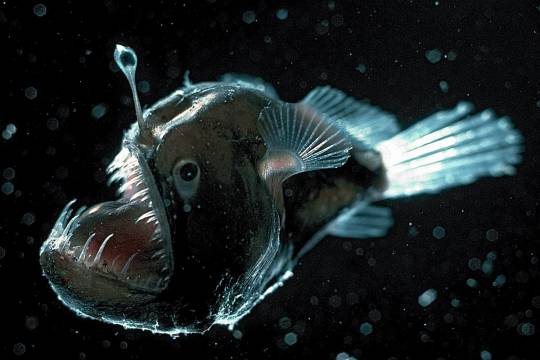

(I couldn't find many photos sorry)
As this is bioluminescence Monday, I obviously have to mention the bulbs the females have attached to their heads. The light from the bulbs is caused by small glowing bacteria called photobacterium.
#fish#fish facts#sea creatures#marine biology#bioluminescence#anglerfish#marine bio#sea#marine life#fishfact#actually autistic#special interest#science#marine science#marine animals#deep sea#deep sea creatures#if im wrong about any of these please let me know#ik its wednesday#im catching up#ill probably post cetacean tuesday today#aswell#hopefully ill be able to do wonky wednesday as well#bioluminescence monday
56 notes
·
View notes